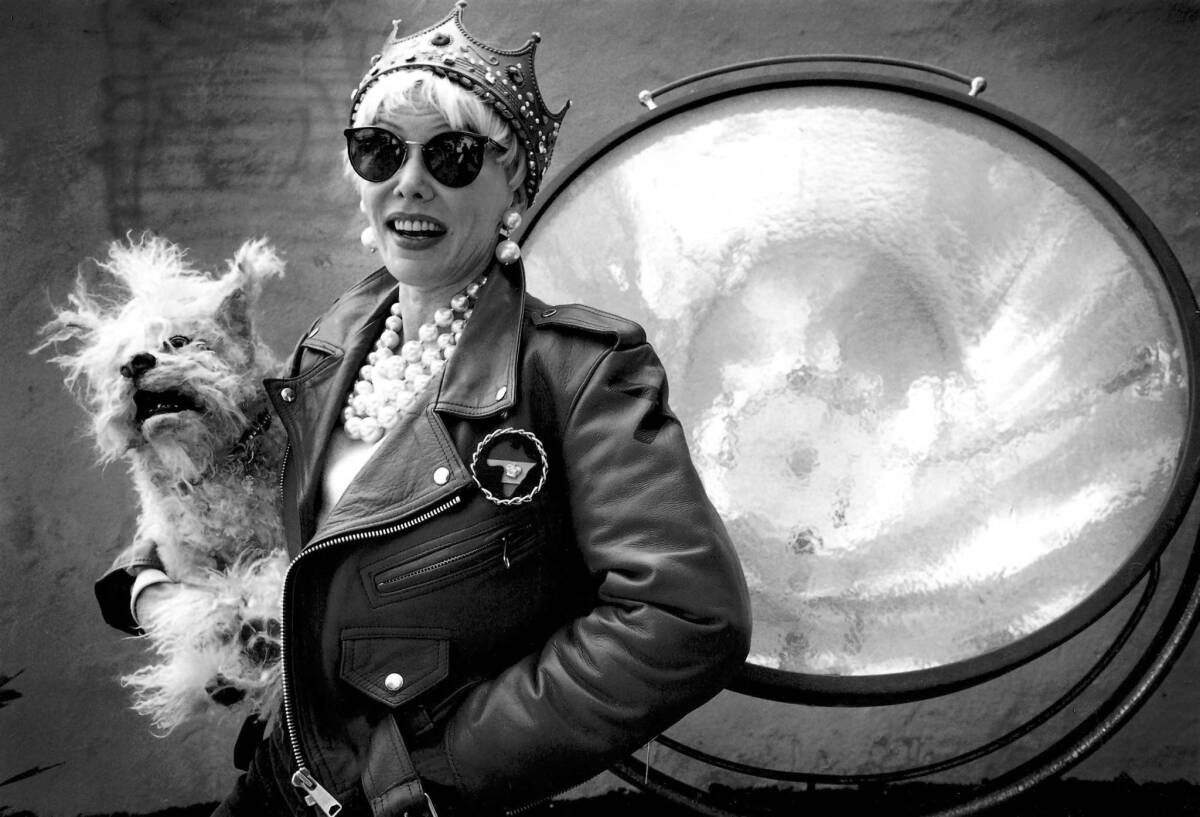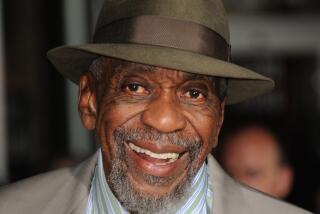Susan Tyrrell dies at 67; actress an Oscar nominee for ‘Fat City’

Susan Tyrrell, an eccentric, husky-voiced character actress best known for her Oscar-nominated supporting role as a blowsy barfly in director John Huston’s 1972 movie “Fat City,” has died. She was 67.
Tyrrell died Saturday at her home in Austin, Texas, according to the Travis County medical examiner. The cause of death was not yet known.
The actress, whose many film credits included “Islands in the Stream” (1977), “Angel” (1984) and “Cry-Baby” (1990), already had played a number of colorful character roles on stage in New York before being cast in “Fat City,” a boxing drama starring Stacy Keach and Jeff Bridges.
In his review, The Times’ Charles Champlin wrote that Tyrrell’s “whining, self-dramatizing barfly” — who takes up with Keach’s small-time boxer after her own man goes to jail — “gives an enormous vitality to the movie.”
Critics “hailed her as one of the best screen drunks they’d ever seen,” Roderick Mann later wrote in The Times.
“I adored her,” Keach told The Times on Tuesday. “I loved her whiskey voice; she had this voice that just reeked of soul and sweetness. She was like the Billie Holiday of the dispossessed.”
Keach also starred with Tyrrell in the 1976 film “The Killer Inside Me” in which she played a prostitute who became the victim of Keach’s psychopathic sheriff.
“She always played these sort of battered, sensual, sexy, vulnerable women; sort of a beat-up Marilyn Monroe,” he said. “She always had a vulnerability about her that was engaging, and she had a wonderful sense of humor. She was one of a kind.”
During her “Fat City” success, Tyrrell told the New York Times in 1972: “Character work is what I love and what I do best.”
Tyrrell’s personal life was seemingly as colorful as the characters she played and included being pulled in to Andy Warhol’s orbit. Typically, she resisted joining his circle.
“I’m a loner and an outsider,” she told the Austin American-Statesman in 2010. “Those things strangle me. For me, there is not strength in numbers.”
During the Warhol days, she said, she wasn’t into drugs. “But later on in life I found beer and acid. They were my best drugs. And mescaline.”
She described her acting career as “disappointing, to say the least. I loved Bette Davis, and I felt I was going to be the next Bette Davis. I knew I had it in me to do a dossier of roles. I so wanted it.”
One highlight of her life, she repeatedly said, was falling in love with actor Herve Villechaize, who played Tattoo in the TV series “Fantasy Island.” They met in the mid-’70s and lived together for two years in a house in Laurel Canyon.
In 1991, Tyrrell appeared on stage in Santa Monica in a semi-autobiographical show she wrote, “My Rotten Life: A Bitter Opera,” which a Times reviewer called “loony” and “hallucinogenic.”
In a 2000 interview with L.A. Weekly, Tyrrell recalled, “The last thing my mother said to me was, ‘SuSu, your life is a celebration of everything that is cheap and tawdry.’ I’ve always liked that, and I’ve always tried to live up to it.”
She was born Susan Jillian Creamer in San Francisco on March 18, 1945, and grew up in New Canaan, Conn.
When she was a teenager, her father, a former William Morris agent, helped her land a role in a 1963 touring production of “Time Out for Ginger,” starring Art Carney.
Tyrrell contracted a rare chronic blood disorder, essential thrombocythemia, in 2000 and had to have her legs amputated below the knees. Yet she continued to act occasionally.
“I was particularly impressed with her in her later years for her bravery and her positivity,” Keach said. “She was a real inspiration.”
And, he said, “unbeknownst to many people, she was a great artist. Her drawings and paintings are brilliant; unique, very surreal.”
Information on survivors was not immediately available.
More to Read
Start your day right
Sign up for Essential California for the L.A. Times biggest news, features and recommendations in your inbox six days a week.
You may occasionally receive promotional content from the Los Angeles Times.






